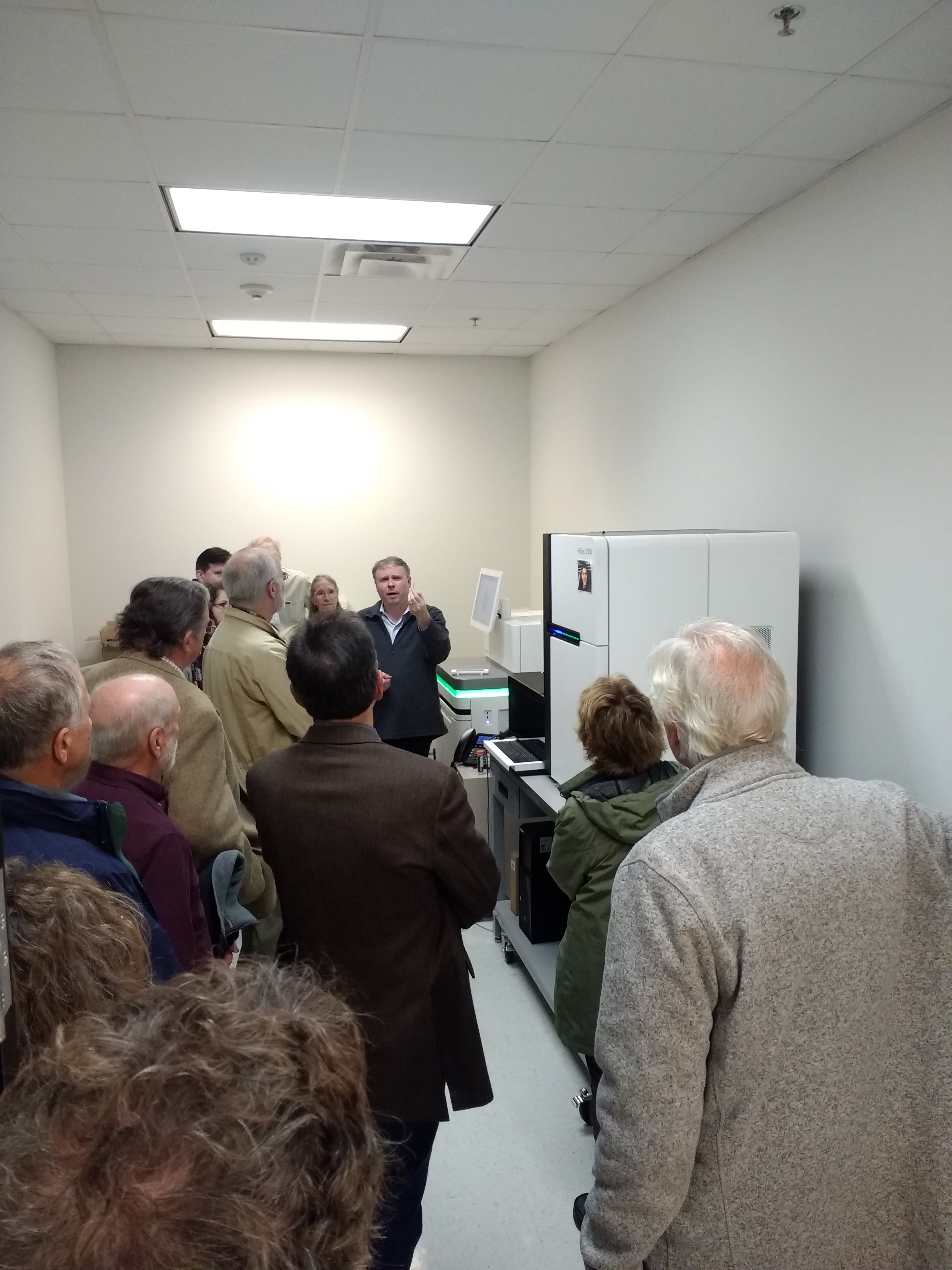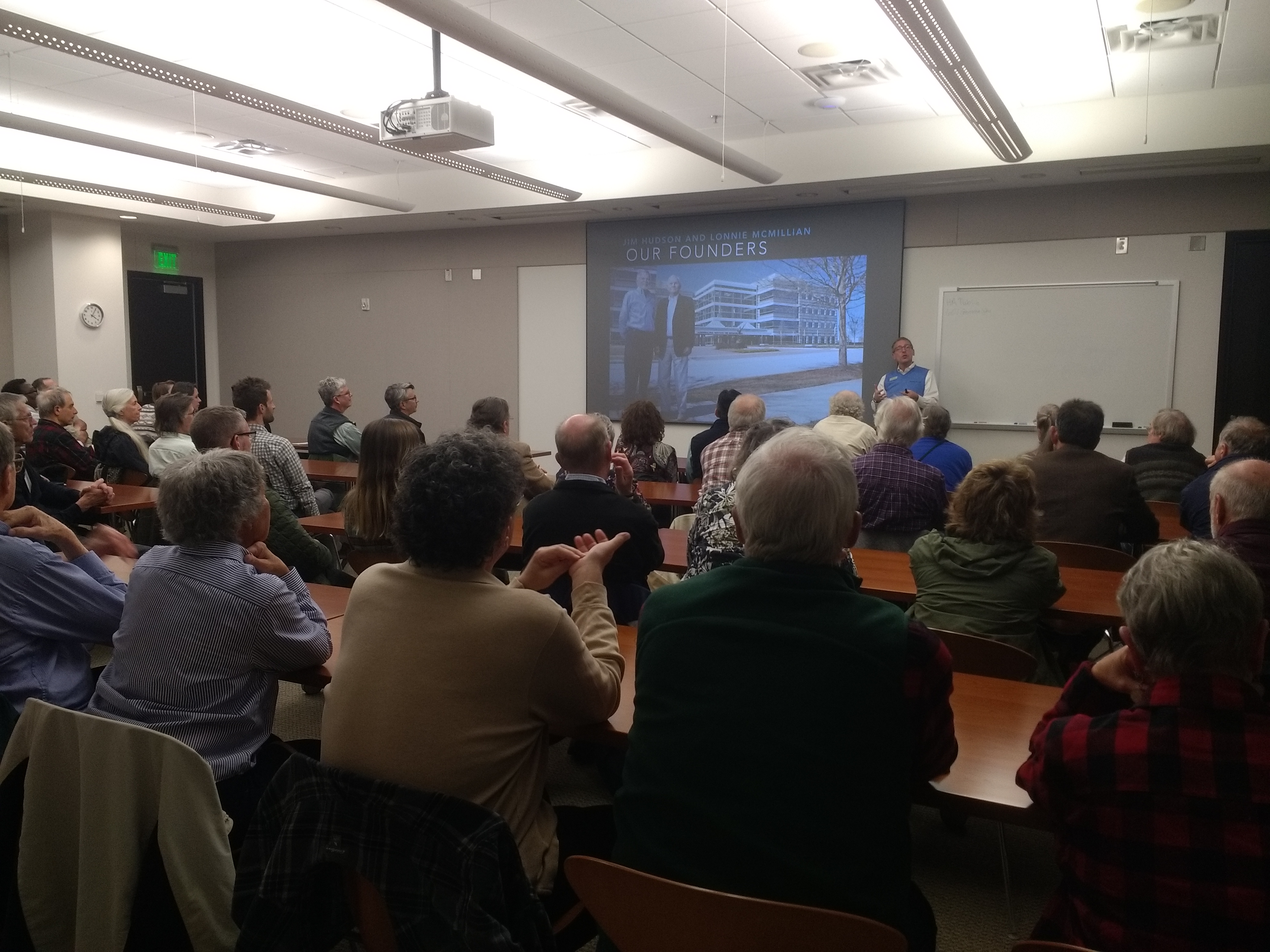The American Chestnut Foundation visited Huntsville for the organization’s 35th anniversary and annual meeting, touring the HudsonAlpha Institute for

Jeremy Schmutz giving the American Chestnut Foundation a tour of the HGSC
Biotechnology and getting an update from Jeremy Schmutz, faculty investigator, on recently completed efforts to generate a reference genome for the once economically-essential tree.
For more than a century, the American chestnut fueled the economies of whole rural areas through reliable nut harvests and valuable lumber. Around 1900, the American chestnut was wiped out by an invasive fungal pathogen that killed more than three billion trees.
The American Chestnut Foundation notes on their website:
The American chestnut tree reigned over 200 million acres of eastern woodlands from Maine to Florida, and from the Piedmont plateau in the Carolinas west to the Ohio Valley, until succumbing to a lethal fungus infestation, known as the chestnut blight, during the first half of the 20th century.
HudsonAlpha and the Genome Sequencing Center have just completed a reference genome for the American chestnut, giving researchers a way to analyze data that has been collected over time as part of the breeding program for chestnut trees. This, along with the resequencing of hybrids from American and Chinese chestnuts, works toward the ultimate aim of identifying the regions of the tree’s genome that can protect it from the blight.

Neil Lamb, PhD, speaking to the American Chestnut Foundation about HudsonAlpha
The ultimate goal of the American Chestnut Foundation is not just to prevent environmental loss or preserve the remaining chestnuts; the organization aims to restore the species and the ecosystem that goes with it.
“A reference genome gives us the tool to identify the sources of blight resistance, so we can create a more resilient American chestnut,” said Schmutz. “By early in the 20th century, the blight had eliminated the American chestnut as a mature forest tree. We hope to one day change that. Successfully creating a reference genome can put us one step closer.”
In service of that effort, an Alabama chapter of the TACF is growing and maintaining planting here in the state. If you’re interested in joining or volunteering, you can find more information here.
The DNA analysis was funded by a grant from the Colcom Foundation to the American Chestnut Foundation.

